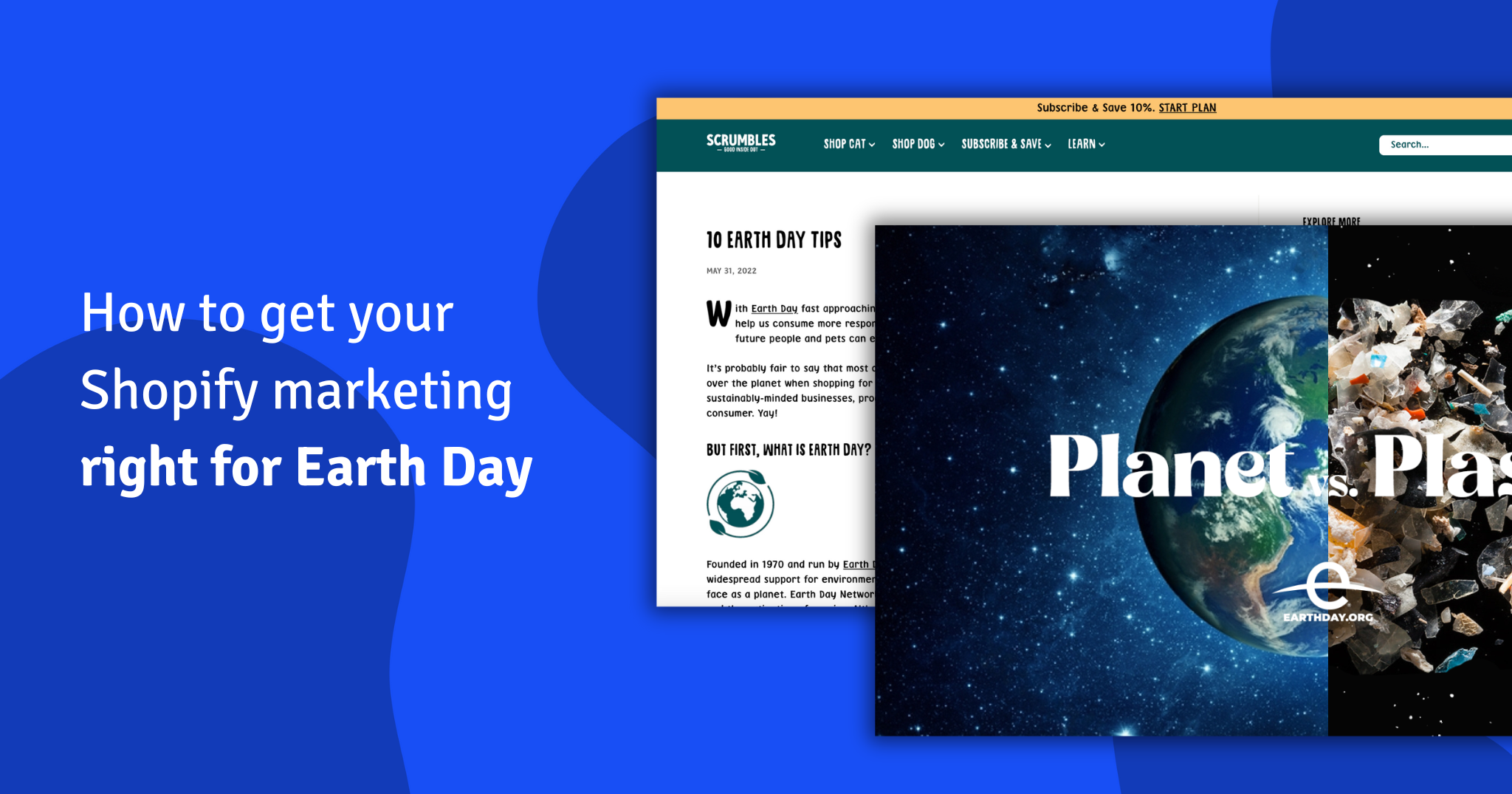If you love pizza as much as we do, you will know that “how to make pizza dough” is a competitive keyword to rank for in Google.
It has nearly 15,000 searches a month in the UK alone. Pages one and two on Google are full of articles created to rank on Google for this keyword.
If you want a ‘pizza the action’ and to outrank the competition, whatever you produce has to be better than the top 20+ other articles covering the same topic. Tough gig!
Simply put, the stronger your content, the stronger your position will be within Google’s results. In reality, this principle is easier said than done, especially if you’re targeting a popular search phrase.

Content Marketing has really taken off in the last few years. We’ve seen a huge rise in content being published. So much so, it’s reaching saturation point. WordPress have reported that around 70 million blog posts are published each month on their platform alone.
Image Creds: BuzzSumo
For this reason, it is vital that the quality of content being published is better than anything else out there if it’s to succeed in gaining traction in search engines.
But what defines the strength of your content?
There are a number of elements which Google will use to determine how good your content is compared to competitors. In order to achieve high scores, the content and on-site experience have to be exceptional. There is just no more room for you to just wing it and hope for the best.
So, we have suggested ways to elevate your articles so they stand above the competition.
Page Quality:
Obviously, the page has to be “high quality” but what generally determines this?
Google cares about:
- Length of copy
- Originality of copy
- Great use of headers and keywords
- Strong images
- Fast load times
A few ideas to improve page quality:
- Long-form copy

A recent trend in blogging shows an increase of long-form content. The average blog post is 1142 words long. Six times as many bloggers are writing 2000+ word posts than previous years. People are basically spending a lot longer on their content than they did a few years ago.
Image Creds: Orbit Media

And this is reportedly producing better results in terms of traffic and engagement…
Image Creds: Brian Dean at Backlinko
Therefore, modern Content Marketing advice is to post less frequently, with more in-depth pieces, rather than publishing frequent, shallow content. Singular masterpieces can yield a greater return than multiple lighter articles.
- In-depth content

Whilst we advocate long-form content, that’s not to say that long content (for the sake of word count!) equals “good”. The true measure is “depth”, among other things. So, don’t be tempted to write uber-long waffle. The point of content length is depth and authority. It’s not isolated to a single post either, but the depth your websites goes to across all of its content.
Image Creds: Brian Dean at Backlinko
Note the metric used above: “Topic Authority”. This is a relatively new metric created by MarketMuse for measuring a sites “depth of expertise”. It is a score based on a sites ability to consistently produce high-quality, comprehensive content that covers a topic holistically.
- Crowdsourced content

Using industry leaders and experts to co-author content is a fantastic way to add weight and credibility to an article. Furthermore, those involved will be inclined to share the content and even link to it – supporting SEO objectives.
Unfortunately, just stating that research has been undertaken is not enough to have an impact, nor will it encourage those contributed to share the piece. The idea is to fully integrate quotes from those who participate. All experts used should be quoted, with portrait images used.
Below are two great examples of such content:
15 HR Experts Reveal Tips to Make Employee Onboarding Productive & Increase Staff Retention

A great way to crowdsource such content is getting on Twitter using the hashtag #JournoRequest. Put out a message asking if any of your industry experts would like to contribute towards a piece. Give them a specific subject to comment on, keeping it topical and relevant.
Another approach is to outreach to specific bloggers that have written about a similar topic. Offer something in return, such as a link to their social media profiles or websites. You can also crowdsource information by syndicating a poll or survey amongst your professional networks or even customers. It’s always good to include original information and data, rather than just Googling for stats.
User Engagement Signals:
User engagement is more important than ever and there ain’t no fooling it.
Google is tracking how people interact with your pages. You can see it for yourself in Google Analytics. Poor engagement suggests poor quality pages which infuriate users. Especially those on mobile devices, which Google now prioritise.
Of course, there’s a question over correlation and causation, i.e. do high ranks drive strong engagement or does strong engagement drive high ranks? But it seems logical that Google would use engagement data, if only as a validation check. They could potentially drop ranks for sites whose metrics appear below expected standards.
Looking at it from Google’s perspective, user signals are a fantastic way to shape the search results. It’s data they have at their disposal that transcends algorithmic “guestimations”. So, you can be sure, if your engagement levels suck, you’re not going to rank well.
Positive engagement signals include:
- High click-through rates from the search results
- Low bounce rates – i.e. people hitting the back button
- High time on site – large volume of content that users feel compelled to read
- User action once on site – typically clicking through to other content, or click on page elements
- Shares on social media
- Comments on page
- Traffic from social media
A few ideas to improve engagement:
- Calls to action that prompt a user to do something before they hit the back button
- Social buttons
- Email entry forms to fill out to receive updates
- Prominent links to click for further reading
- Downloadable assets
- Slow loading times and poor text-to-image ratios will lesser user experience and increase bounce-rates
- Hiding content below the fold will increase bounce rates
- Page titles that closely mimics all other articles in the search results will get ignored, lowering click-through rate
- Make sure you don’t exact-match your title with your keyword and write something really clicky!
- Click-through rates are in fact believed to be an important ranking signal
Link Acquisition:
Acquiring links is one of the most effective SEO strategies, however, it is also one of the most difficult.
These days, it’s becoming more and more common to use link building to drive the ranks of content, not just money-pages. This is a sensible evolution as content build better links anyway, and doing so yields more efficient returns from link building campaigns.
To those new to link building, the name is a bit misleading (or rather, it’s extremely antiquated!). The practice isn’t to build links, really. Instead, we create the optimal circumstances for links to be acquired naturally. Then apply a little push and manual intervention to maximise results.
Ultimately, when it comes to links, the metrics that move the needle are pretty simple:
- Number of links from external websites
- High relevance and quality of these links
- Loads and loads of low-quality links is a very bad idea.
- Whereas, a handful of mega-link might not be enough to make an impact.
Like with most things, the goal is to strike a balance of quality and quantity. If you’re earning links naturally, the whole debate is fairly moot as you’re not controlling inbound links anyway.
Below are three ways to build links to your content:
- Getting the contributing authors to link from their own sites
This is one the greatest benefits of crowdsourcing content. It means the article will likely start with a handful of “free” links from relevant sites.
- Obtaining natural links over time, based on the quality of the information
The best content online attracts links automatically, preventing the need to proactively build links. Furthermore, the best links are always those that build themselves. They just are.
Content can be optimised to encourage natural links, as follows:
- Original, unique stats and data that can be cited
- Generally being the best, encouraging people to recommend you
- Creating original artwork and images that others may want to use
- Ranking on Google when people are researching for their own articles
Natural link acquisition really is the amber-nectar of SEO and its what best practitioners always aspire to and strive for.
- Proactively outreaching to websites, asking them to link back
Manual outreach can be executed to build links; however, it is only effective once the following criteria are met:
- The content being promoted needs to offer something new and valuable
- A strong hook or talking point
- The asset being linked to must offer genuine value to third party websites
- Your outreach pitches must be awesome.
For further reading and ideas to improve proactive Outreach and Digital PR, check out our super guide found here. Before you launch your own campaigns, make sure you read our guide to and not upsetting them!
If you want any help or support with any aspect of Digital Marketing, Glaze are here to lend a hand. We can drive your Digital presence and help you achieve your business ambitions.


